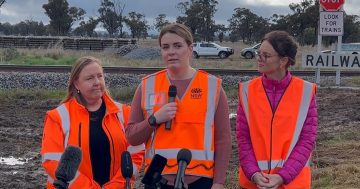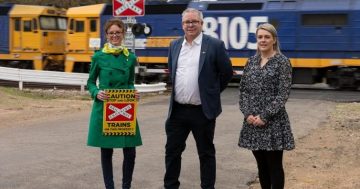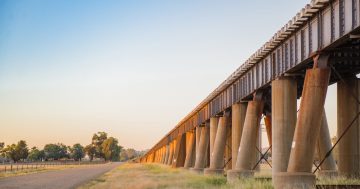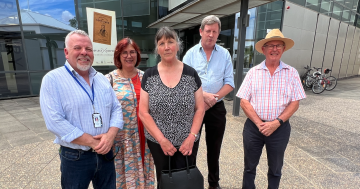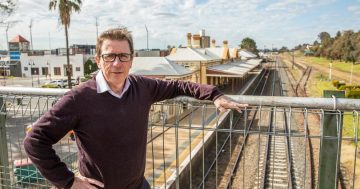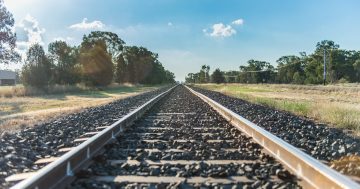
Double-stacked freight trains will travel the Inland Rail route connecting Melbourne to Brisbane via regional Victoria, NSW and Queensland. Photo: Inland Rail.
For Young nurse Maddie Bott, there are many concerns regarding the 1700km Inland Rail freight project that will connect Melbourne to Brisbane via regional Victoria, NSW and Queensland.
The rail route skims the western edges of the NSW South West Slopes and Riverina, and will pass through the communities of Illabo, Stockinbingal, Milvale, Bribbaree and Quandialla, west of Cootamundra and Young.
Maddie – who earlier this year lost her fiance, Ethan Hunter, to a truck and train collision on a level railway crossing near Bribbaree – says the project is catastrophic for residents and farmers living in the region.
“Lots of people in our small rural towns do not know about the Inland Rail project,” she says. “I admit until Ethan died, I had no idea.”
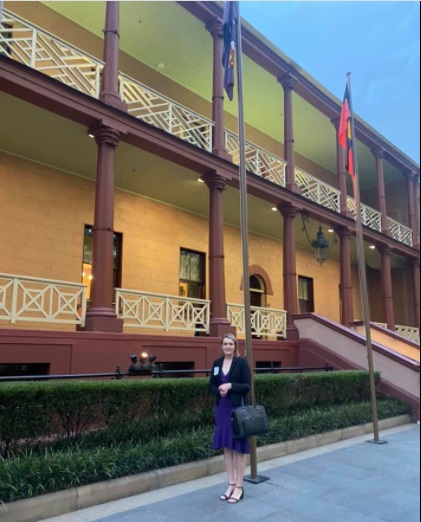
Maddie Bott has been campaigning for improved safety measures at passive level rail crossings since the death of her fiance, Ethan Hunter, in February 2021. Photo: Maddie Bott.
In February 2021, Ethan and a work colleague died on a passive crossing located on a private road. Accidents such as this are commonplace out in the farming regions.
“Currently, there are eight to 12 freight trains running during 24-hour periods on this line,” says Maddie. “The Inland Rail will increase that rate to 14 trains per 24 hours. And the trains will be double-stacked.”
Maddie says as far as she knows, of all the passive rail crossings on that section of line, only one is to be upgraded to active level, which will include flashing lights and boom gates – and more passive crossings will be created.
She says that despite it being a federal project, representations to MPs have resulted in them passing the buck to their state counterparts.
Maddie has successfully gathered more than 20,000 signatures for a state parliamentary petition asking for better safeguards on passive level crossings, including warning lights and boom gates. This petition is still to be presented to NSW Parliament, but is expected to trigger debate.
In the meantime, she has met with NSW Minister for Regional Transport and Roads Paul Toole who said he is working closely with her to improve safety.
Maddie says she hopes NSW will follow the lead of Victoria, which is in the process of removing 85 level rail crossings on congested roads in metropolitan Melbourne by 2025.
Meanwhile, NSW Farmers and the Country Women’s Association of NSW (NSWCWA) have welcomed the release of a long-awaited report from the Senate Rural and Regional Affairs and Transport Reference Committee into management of the Inland Rail project.
The report is titled “Inland Rail: Derailed From the Start” and comprehensively details a range of major issues in relation to the Inland Rail project, including the business case for its development, failings in community engagement and consultation, route selection issues, and flooding and hydrology concerns.
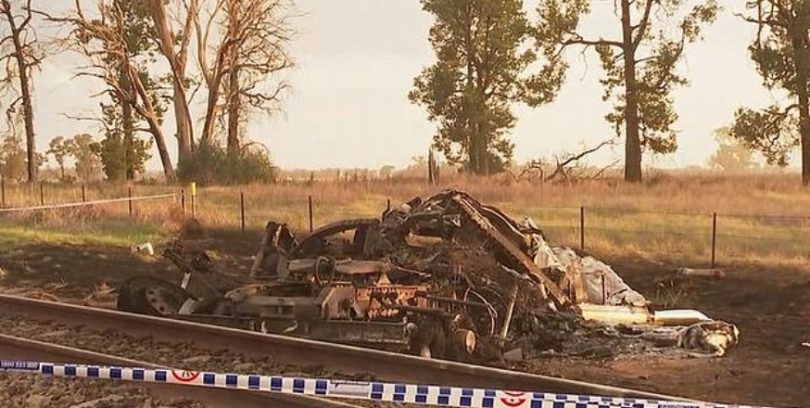
The scene of devastation following the fatal accident near Bribbaree in February 2021. Photo: Supplied.
In the report, the Australian Rail Track Corporation (ARTC) was roundly criticised for its bungling of the project to date, and the Federal Government’s role in certain strategic failures to address the issues surrounding the project rollout is also highlighted.
“We thank the committee for its comprehensive work in reviewing and reporting on the significant failures that exist in relation to the delivery of this nation-building project,” said NSW Farmers Inland Rail taskforce chair Adrian Lyons.
“NSW Farmers have been raising many concerns in relation to this project for more than six years, and this is the first time we have actually felt heard, and where we have seen the concerns of our members reflected in the findings of a government process.
“ARTC has continually had a ‘crash or crash-through’ mentality when it comes to the execution of this project. Well today, they have crashed in a major way.”
NSWCWA CEO Danica Leys said her organisation’s members agree.
“The publication of this report strongly vindicates our work and the concerns that have been expressed by our respective members,” she said.
“The project has become a basket case of mismanagement and budget blowouts, combined with a total unwillingness from the project proponents to listen to community concerns.
“The report shines a huge light on these matters and totally supports the advocacy work we’ve been undertaking.”
NSW Farmers and NSWCWA have now called on the Federal Government to act on the recommendations made in the report, and look forward to discussing them further with Deputy Prime Minister Barnaby Joyce at an upcoming meeting.



